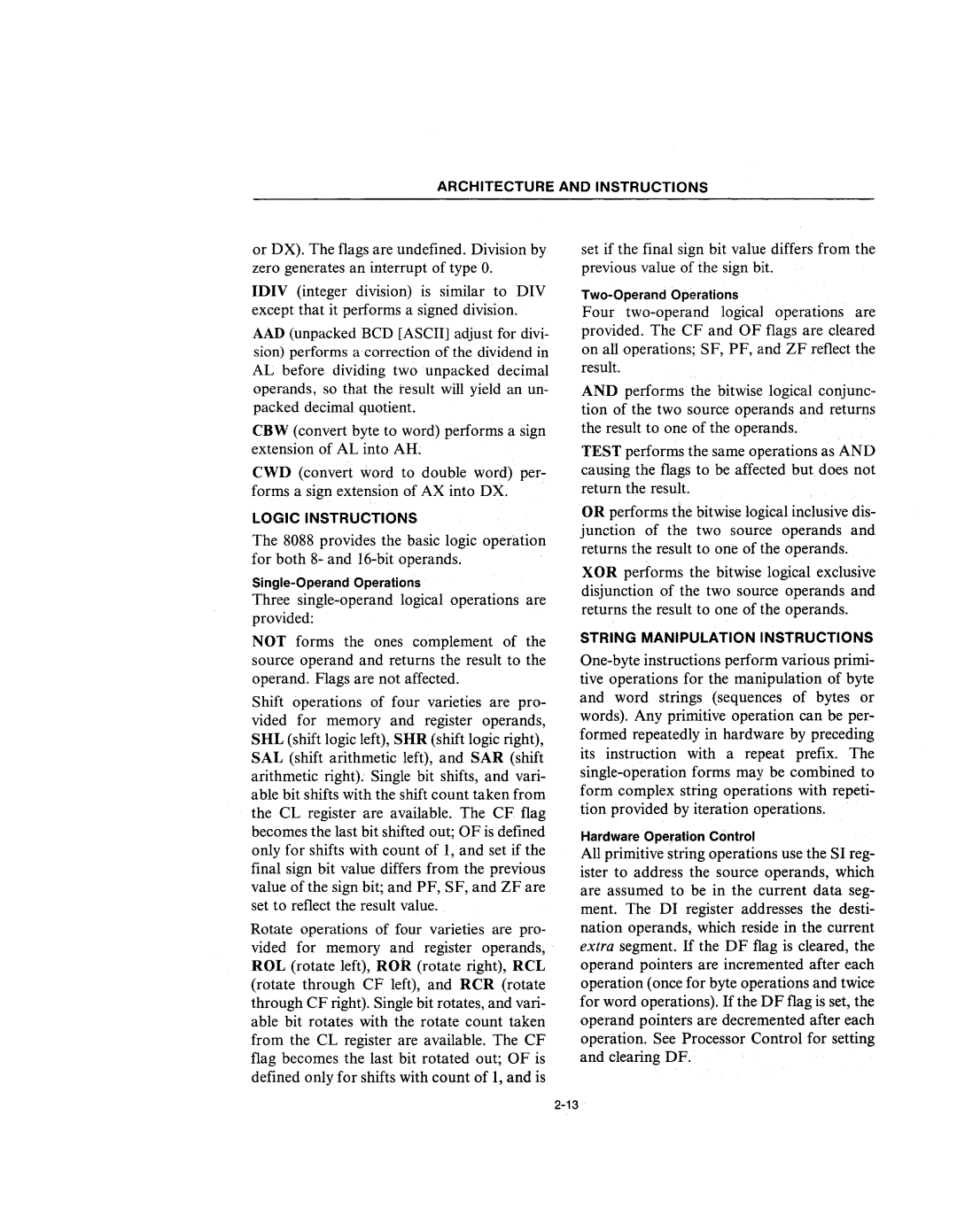
ARCHITECTURE AND INSTRUCTIONS
or DX). The flags are undefined. Division by zero generates an interrupt of type O.
IDIV (integer division) is similar to DIV except that it performs a signed division.
AAD (unpacked BCD [ASCII] adjust for divi- sion) performs a correction of the dividend in AL before dividing two unpacked decimal operands, so that the tesult will yield an un- packed decimal quotient.
CBW (convert byte to word) performs a sign extension of AL into AR
CWD (convert word to double word)
LOGIC INSTRUCTIONS
The 8088 provides the basic logic operation for both 8- and
Three
NOT forms the ones complement of the source operand and returns the result to the operand. Flags are not affected.
Shift operations of four varieties are pro- vided for memory and register operands, SHL (shift logic left), SHR (shift logic right), SAL (shift arithmetic left), and SAR (shift arithmetic right). Single bit shifts, and vari- able bit shifts with the shift count taken from the CL register are available. The CF flag becomes the last bit shifted out; OF is defined only for shifts with count of 1, and set if the final sign bit value differs from the previous value of the sign bit; and PF, SF, and ZF are set to reflect the result value.
Rotate operations of four varieties are pro- vided for memory and register operands, ROL (rotate left), ROR (rotate right), RCL (rotate through CF left), and RCR (rotate through CF right). Single bit rotates, and vari- able bit rotates with the rotate count taken from the CL register are available. The CF flag becomes the last bit rotated out; OF is defined only for shifts with count of 1, and is
set if the final sign bit value differs from the previous value of the sign bit.
Four
AND performs the bitwise logical conjunc- tion of the two source operands and returns
the result to one of the operands. | . |
TEST performs the same operations as AND causing the flags to be affected but does not return the result.
OR performs the bitwise logical inclusive dis- junction of the two source operands and returns the result to one of the operands.
XOR performs the bitwise logical exclusive disjunction of the two source operands and returns the result to one of the operands.
STRING MANIPULATION INSTRUCTIONS
Hardware'Operation Control
All primitive string operations use the SI reg- ister to address the source operands, which are assumed to be in the current data seg- ment. The DI register addresses the desti- nation operands, which reside in the current extra segment. If the DF flag is cleared, the operand pointers are incremented after each operation (once for byte operations and twice for word operations). If the DF flag is set, the operand pointers are decremented after each operation. See Processor' Control for setting and clearing DF.
